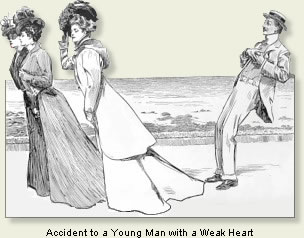The term "western culture," is a package deal of a phrase. It not only represents the culture that I am used to here in American, but also the culture across the sea in Europe. Before conducting my research on these two cultures in depth, if someone had asked me what the difference is, I would have had to think about it for a while and in the end would have mumbled something about their accents being different.
On my initial search of looking for the differences between Europe and America, I found a strange yet interesting meme that, depending on the sometimes less than appropriate images, made me avert my eyes quite quickly and exit out of the webpage. This meme touched on subjects like American obesity, European hair, and even compared some famous people, but that was not at all what I was looking for. I wanted to go much deeper into considering the important cultural differences and not waste my time looking at posts that people make in their free time. No that there is anything wrong with that.
After recovering from my initial attempt to find information on my subject, I decided to focus on specific values that people could relate to. A big one that immediately came to my mind was family! All cultures have some sort of family values so I decided that that would be a good starting place. Tim Stanley correctly stated that the concept of the American family has been changing into a much broader concept for the past few decades now. This is most likely due to the changes in the ways people think which has been occurring This fact makes it slightly hard to compare without making it a generalization so I decided to use another term to start off with, "The All-American Family." This type of family has a married couple and as many children as they can handle. The father's role is to support the family while the mother stays home to raise the children. This seems like a popular model for a family, though it gender roles are changing steadily. Nowadays, these traditional ideals are being blurred out and the family runs however works best for it since no family is truly that much alike.
What I found about modern European family life actually resembled traditional American family life more than it did our changing system. Elizabeth Fox, Gillian Pascall, and Tracey Warren all collaborated to discuss European families. They discussed how many European fathers have the right to not be a part of their child's life at all in a sort of "parental leave." They also discussed certain gender roles in the United Kingdom specifically and how whether the father wanted to participate or not was completely up to their discretion yet mothers usually were supposed to take time off if they worked to focus on raising the child. The things I discussed can be considered big generalizations since family values stem off of more than just where someone lives, but they must be good representations since cultural researchers found enough cases of these lifestyles to be able to claim its prevalence.
Another thing I enjoy personally is purchasing things, which is why I decided to delve into consumer culture next. Everyone has to buy things, whether it be food or designer clothing. Jeffrey Overby, Sarah Fisher Gardial, and Robert Woodruff all discussed the differences between French and American consumer using wine as their main example. They made the claim that the French buy what they buy because it is what they have always bought and that Americans buy what they buy depending on what it represents in our society. The example they used really highlighted this, "The diners in Lyon are drinking Beaucastel because it represents consistency and security, whereas the diners in Atlanta are drinking Beaucastel because it signifies European sophistication, luxury, and status.
I personally believe these differences are a direct result of the fact that Europe has been around quite a bit longer than American has. Their cultures have had extra time to fully develop compared to America's since America was basically a place where a bunch of different cultures had to be mesh
ed into one to make a single centralized culture. This is highlighted by how, though some of our cultural values seem to be the same as those in Europe, they can be slightly different and in the years to come, they may change much much more depending on what the future holds.
Doing all of this in depth research about cultures made me realize how hard it is to categorize a culture in just one country and yet the term "Western Culture" includes so many different places! The term culture is so general in itself since people can be so different no matter where they live. Though the term is not exactly accurate, when it is used, people do realize what it's talking about so I do not think this blog post is going to destroy that phrase, but I think it's helpful to know at least some of the differences between European and American culture.
Introduction: Love and Romance in American Culture- I used this source to learn about some details about exactly what family life means in American Culture.
How Britishness Can Be Remade- Talked a lot about British culture in general which was helped me learn a little about a certain culture in general.
that gave me somewhat of an idea about the reasons America is different from Europe.













